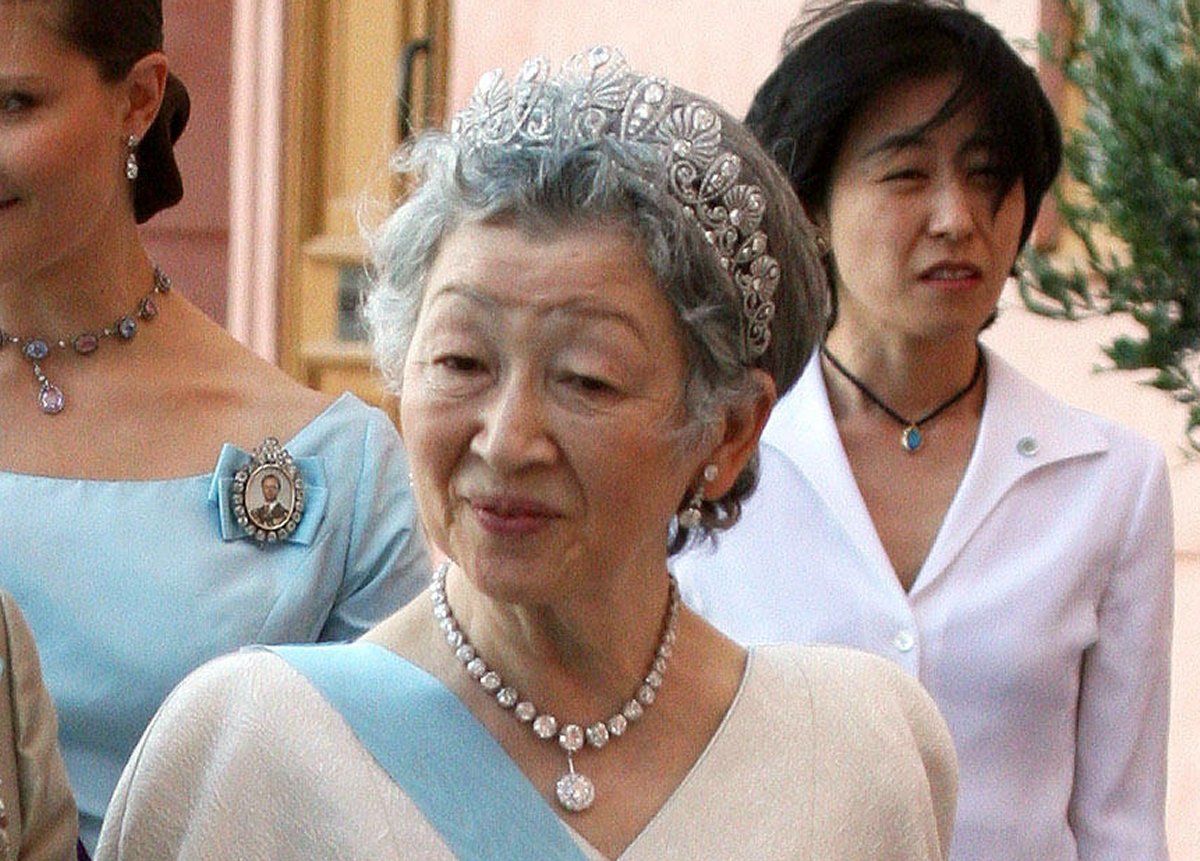
New Year’s week means sparkling tiaras at the Imperial Palace in Tokyo. I’ll be covering the tiaras of this year’s reception when I return to my desk next week, but in the meantime, I’ve got a closer look at one of my personal favorite tiaras from the imperial vaults: a diamond honeysuckle tiara that belonged to a fascinating Japanese princess.
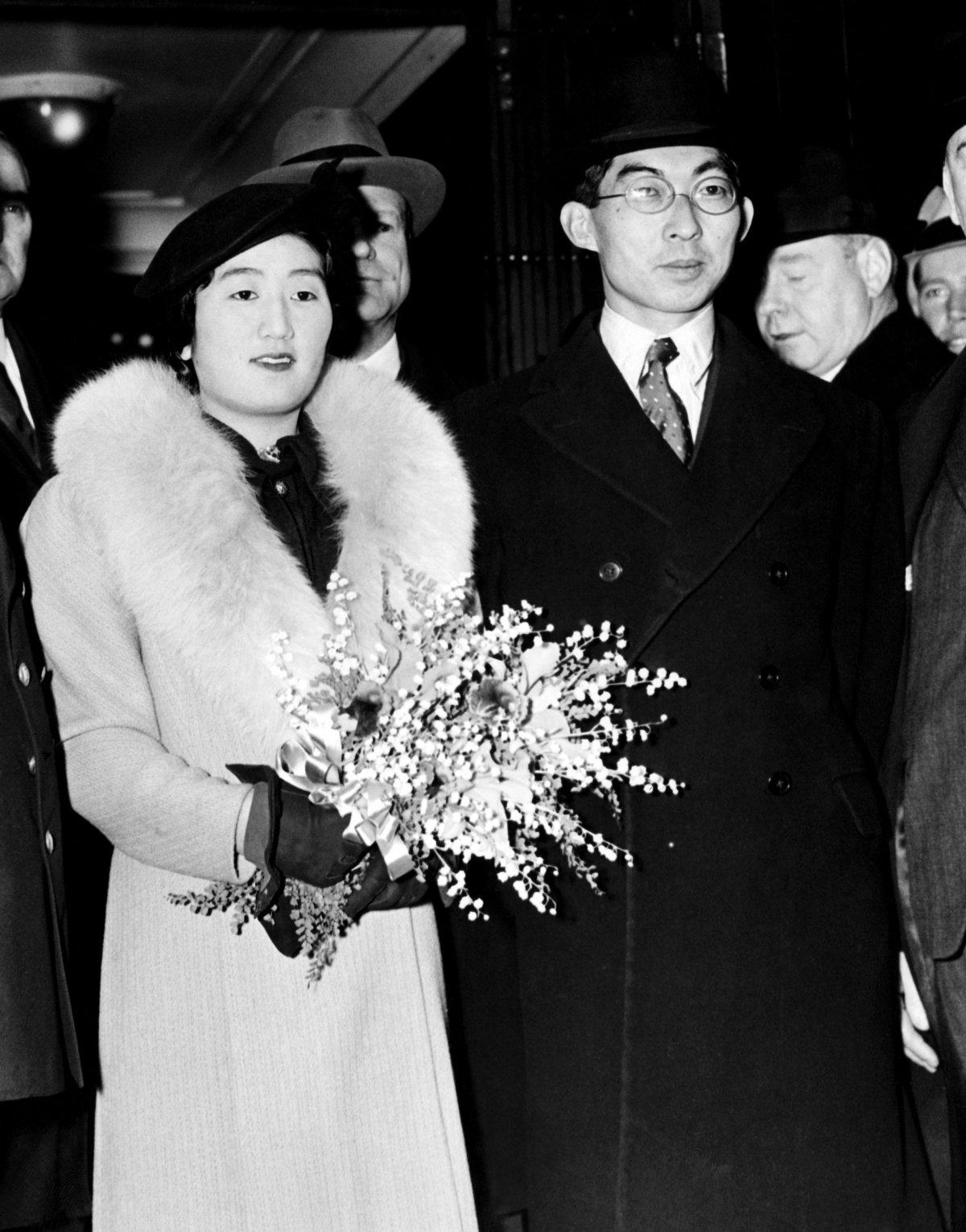
In December 1926, 24-year-old Prince Chichibu—the formal title of Prince Emperor Yoshihito, the second son of the Emperor of Japan—was studying at Magdalen College in Oxford when a message arrived with sad news. His father, Emperor Yoshihito, was declining quickly. The studious prince put down his books and headed to London, then packed for an Atlantic crossing. In America, Yasuhito headed to Washington, where he stayed just long enough to lay a wreath at Arlington, pay a visit to President Calvin Coolidge, and make a stop at the Japanese Embassy. The lightning-fast visit in the midst of a tense moment turned out to be life-changing.
At the embassy, the prince struck up a conversation with 17-year-old Setsuko Matsudaira, the daughter of the Japanese ambassador to the United States. Setsuko and Yasuhito had known each other since they were children, because Setsuko’s mother, Nobuko Matsudaira, was a favorite friend and courtier of Yasuhito’s mother, Empress Sadako. But the meeting at the embassy marked the first time that they’d seen each other in years, because Setsuko spent several years studying in the United States, thanks to her father’s diplomatic appointment.
Prince Yasuhito quickly departed for San Francisco after a day in Washington. Sadly, his father had already passed during his journey home from England, but Yasuhito reunited in Tokyo with his mother and brothers for the emperor’s funeral. The death of Emperor Yoshihito had placed Yasuhito’s elder brother, Hirohito, on the Chrysanthemum throne. Because Hirohito so far only had a daughter, the accession also made Yasuhito the heir apparent. The independence he had enjoyed in England had to be interrupted, at least for a time. Emperor Hirohito denied his brother’s request to be able to return to Oxford to finish his studies, and Yasuhito focused on his duties supporting the emperor at home. Soon enough, papers were filled with speculation about the prince’s future bride, as the imperial succession was not yet secure.
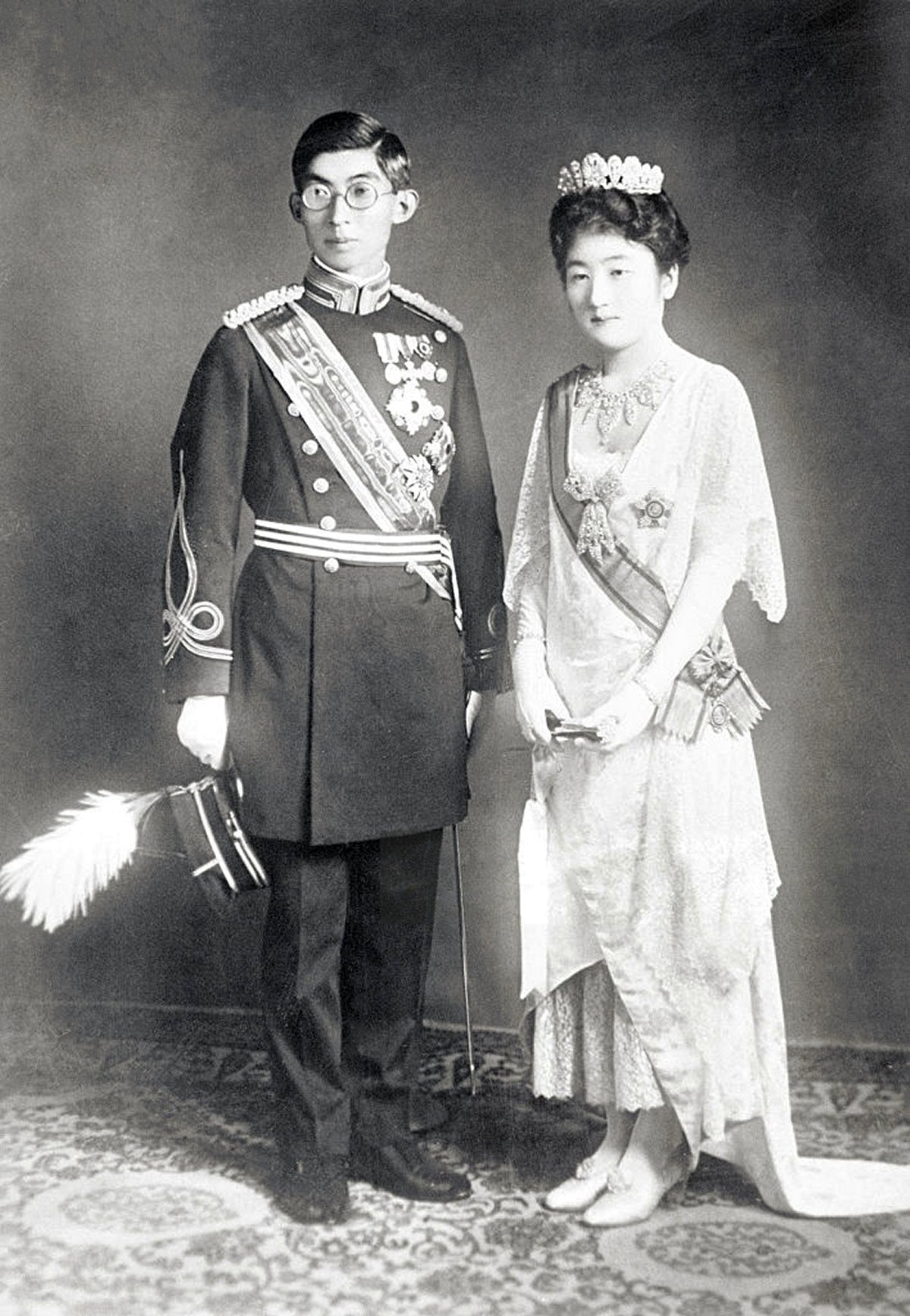
Yasuhito’s mother quickly decided that the perfect future wife for her son was Setsuko Matsudaira, the daughter of her good friend. Recalling their meeting a year earlier, Yasuhito agreed. The formal proposal was made to her father, Tsuneo Matsudaira, in Washington. During the marriage negotiations in the summer of 1927, the ambassador apparently initially turned down the offer to have his daughter become an imperial princess, stating that the honor was simply too great. Eventually, though, the matter was settled satisfactorily when an imperial representative traveled to Washington to repeat the offer in person. Because Setsuko was a commoner, she was formally adopted by her uncle, Viscount Morio Matsudaira, to make the couple’s status equal ahead of their wedding day.
The wedding was held in Tokyo on September 28, 1928, a few months after her father was appointed as ambassador to the United Kingdom. The couple dressed in traditional Japanese attire for the wedding ceremony itself, and then changed into Western-style dress later in the day for a banquet at Akasaka Palace. With her lace wedding dress, Setusko—now known as Princess Chichibu—wore a spectacular suite of diamond jewelry: a diamond honeysuckle tiara with a coordinating necklace, and an enormous, beautiful diamond bow brooch.
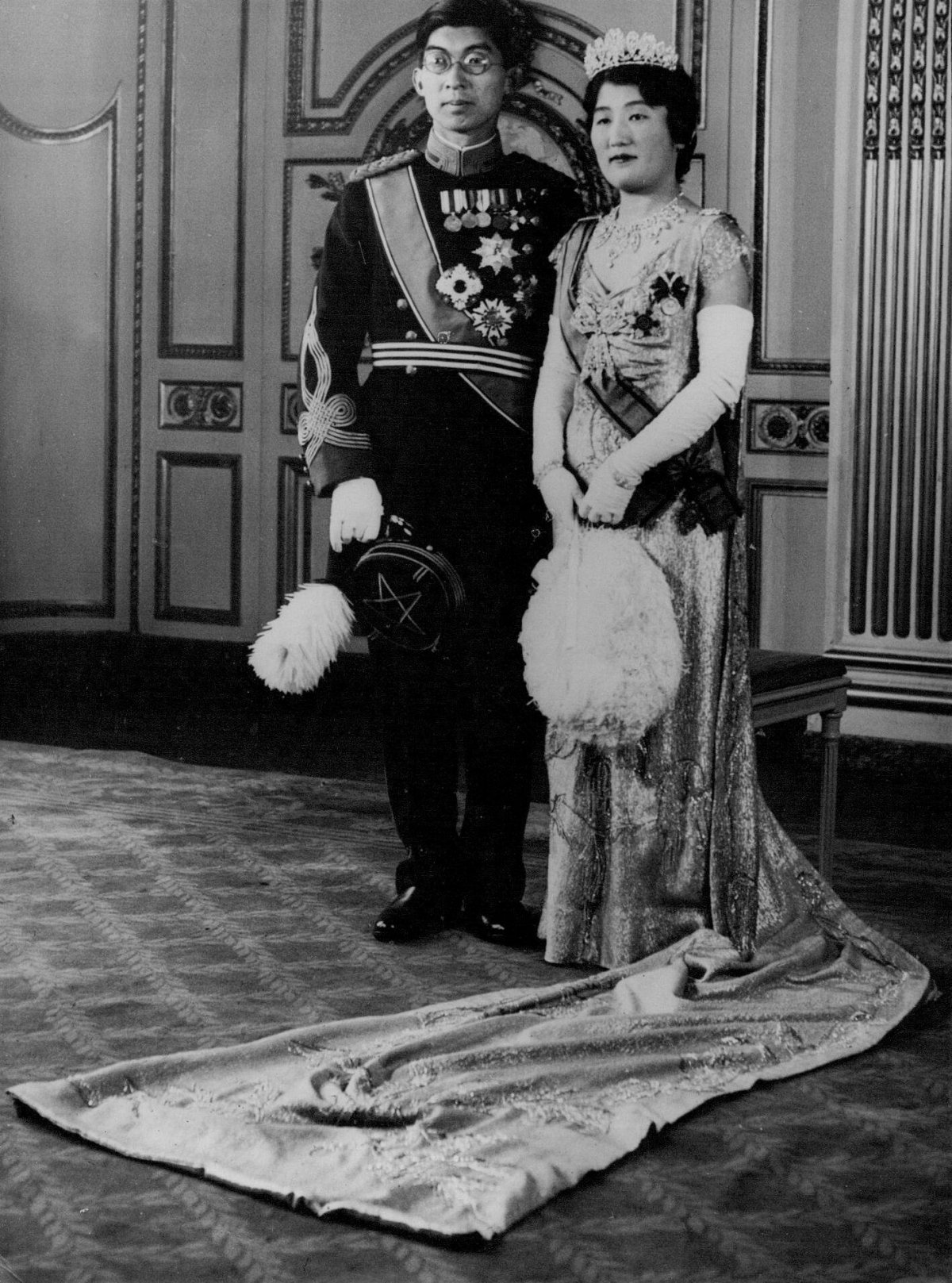
Though their marriage had been an arrangement, Prince and Princess Chichibu apparently had a happy and harmonious marriage. Sadly, they were not able to have children of their own, and in 1933, with the birth of Crown Prince Akihito, Prince Yasuhito ceased to be heir to the imperial throne. Nevertheless, the prince and princess remained central members of the imperial family, often representing the family at important events abroad. In 1937, the anglophile prince and the British-born princess represented the Emperor in London at the coronation of King George VI and Queen Elizabeth of the United Kingdom. It was a joy for both of them to return to England, and they were invited guests at a whole range of balls, receptions, and concerts during the celebrations.
For the coronation itself, Princess Chichibu decided to wear her diamond wedding jewels. Two days before the coronation ceremony at Westminster Abbey, Yasuhito and Setsuko posed for press photographers wearing the uniform, decorations, gown, and jewels that they would wear for the ceremony itself. Newspapers described Setsuko’s dress as “a gown of gold lamé, hand-embroidered with diamante and pearls in a design of Japanese chrysanthemums,” adding, “She will wear it with a long train of the same material and a tiara and necklace of diamonds.” Along with the honeysuckle tiara and necklace, she also wore the same glamorous diamond bow brooch that she wore for her wedding banquet almost a decade earlier, as well as diamond bracelets.

Prince Chichibu passed away in 1953 after contracting tuberculosis, and for the rest of her life, his wife worked to prevent and eradicate the disease. She also remained an active member of the imperial family, supporting causes like the Japanese Red Cross. Her fascination with global travel also continued throughout her life, and she often made post-war visits to Britain, Switzerland, France, and Sweden. She loved watching rugby, gardening, and tennis. When the Prince of Wales, now King Charles III, had tea with her during his 1970 visit to Japan, he paid her a particularly high compliment: “She reminds me of my grandmother.”
When Princess Chichibu passed away in 1995, her diamond jewels returned to the imperial vaults. A decade later, they found their way to another member of the imperial family. Empress Michiko, the wife of Setsuko’s nephew, Emperor Akihito, had access to some of the grandest family jewels, including the Meiji Tiara and the Imperial Chrysanthemum Tiara. But increasing health problems made wearing heavy tiaras uncomfortable. The solution for several gala events in the 2000s was the lighter Chichibu Honeysuckle Tiara, which is likely set in platinum, given the probable 1920s date of its creation.
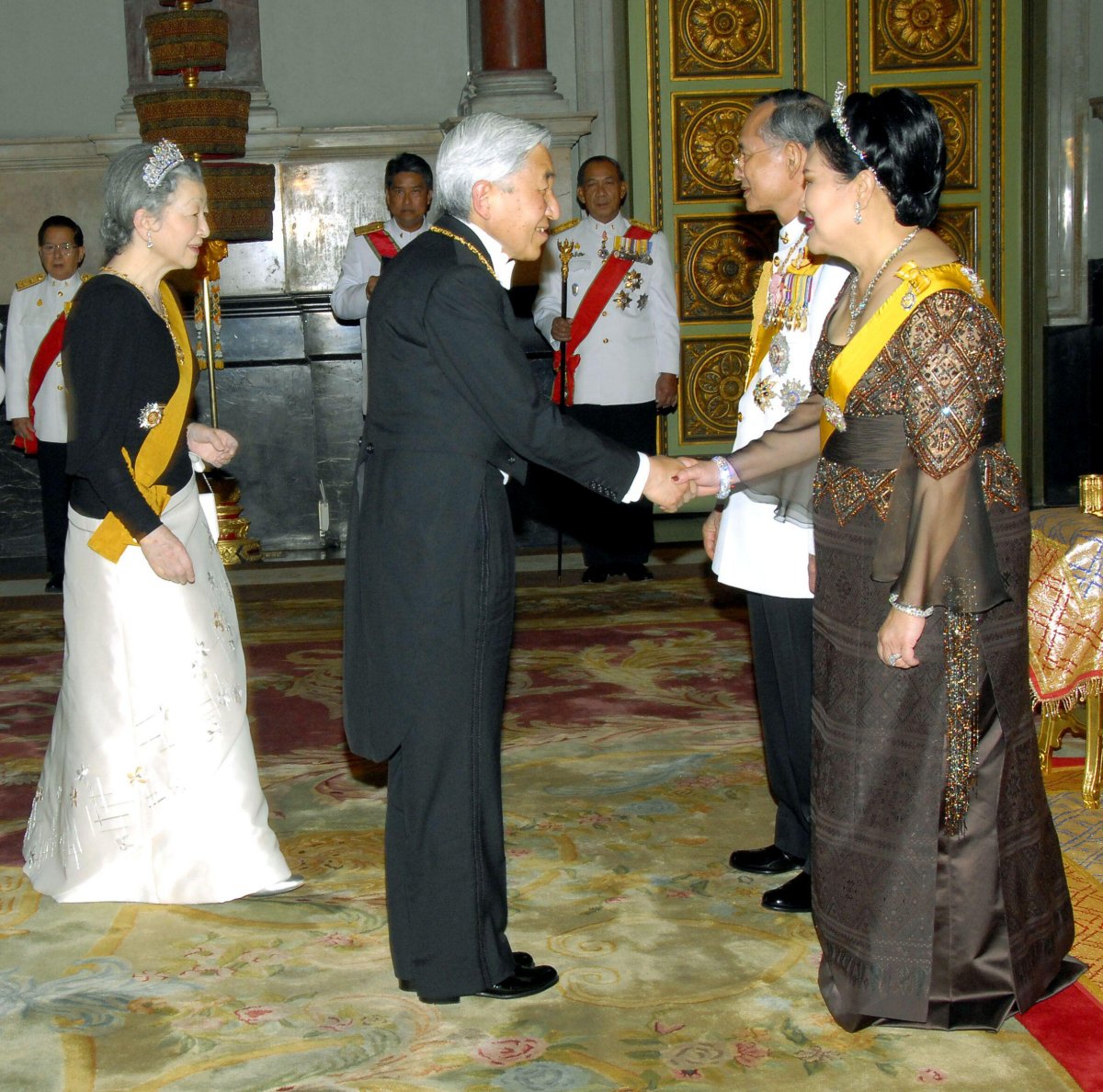
Empress Michiko swapped out her heavier tiaras in favor of the lighter honeysuckle diadem for a whole range of occasions, including several journeys abroad. She wore the tiara prominently in June 2006 during the Diamond Jubilee celebrations for King Bhumibol Adulyadej of Thailand in Bangkok.

Another important outing for the tiara came in May 2007, when the Emperor and Empress traveled to Sweden to be present for the celebrations of the 300th anniversary of Swedish botanist Carolus Linnaeus at Uppsala Castle. Given that the late Princess Chichibu was the honorary president of the Sweden-Japan Society, the choice to wear the tiara for this event was a particularly fitting one.
Soon, Michiko stopped wearing tiaras altogether because of discomfort issues. After her husband’s abdication and her son’s accession in 2019, the honeysuckle tiara presumably returned to the imperial vaults. We don’t know precisely how jewel assignments work within the world of the notoriously-private Imperial Household Agency, but I’d imagine that it’s certainly possible that we may see Princess Chichibu’s gorgeous tiara sparkling on another lady from the imperial family in the years to come. Perhaps Empress Masako could take it out for a spin? Or even Princess Aiko?
Leave a Reply
You must be logged in to post a comment.